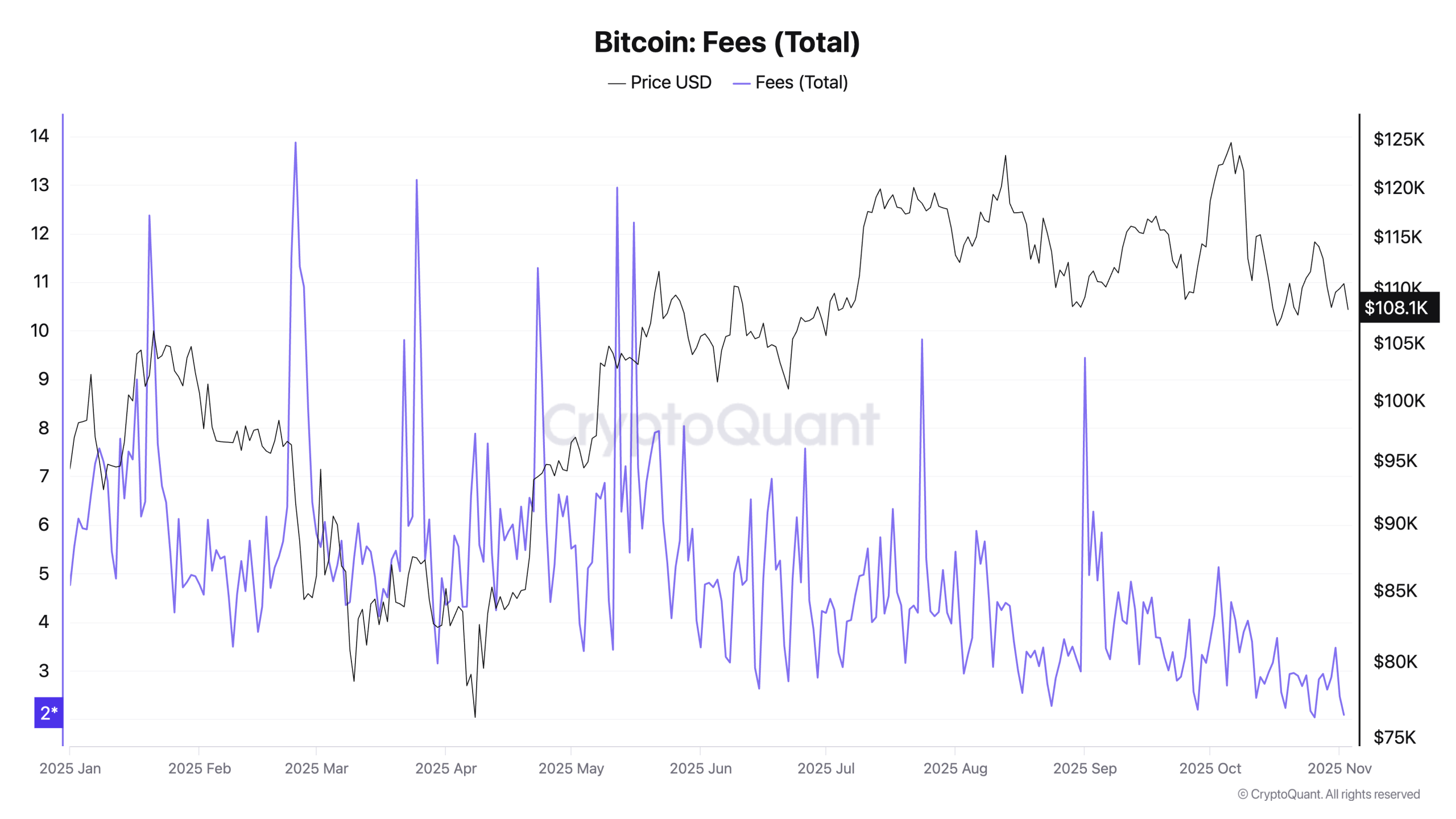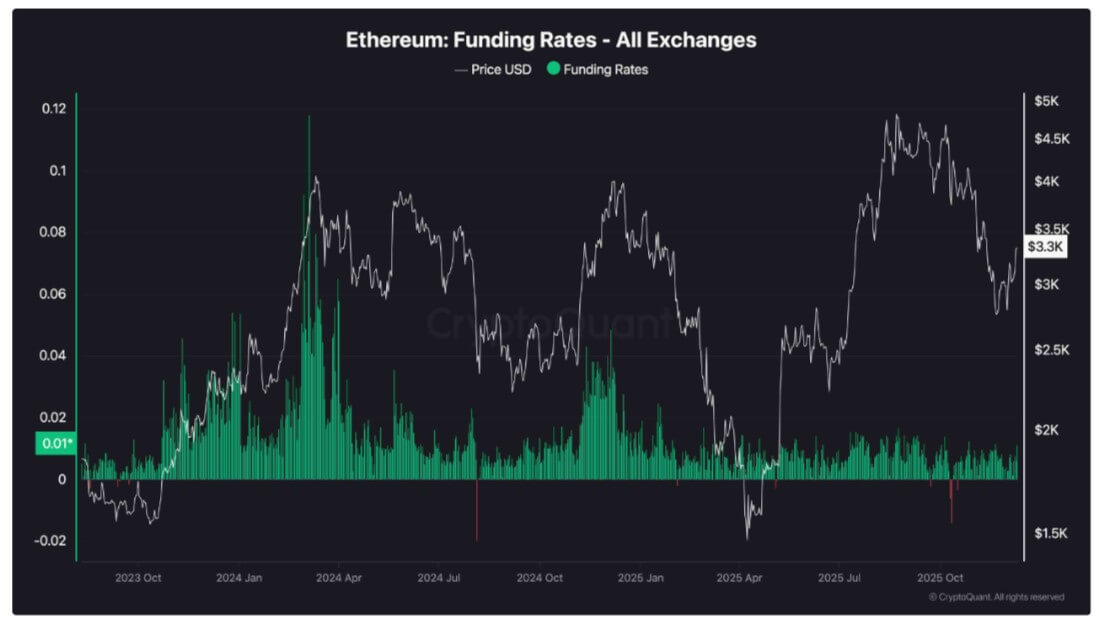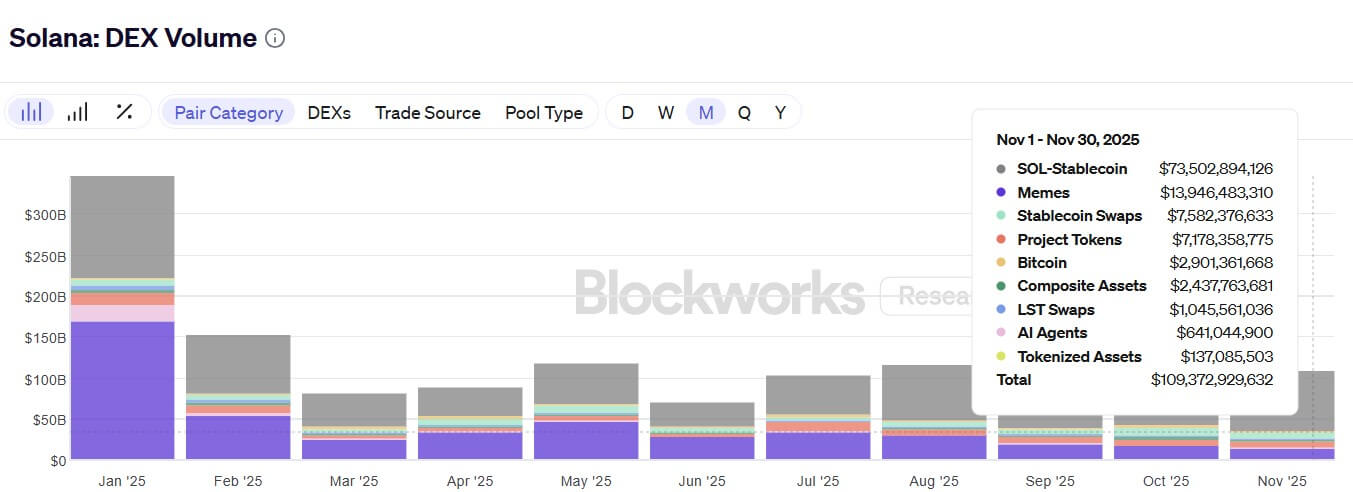
Bitcoin fights to sustain its bull run while fees slide 56% YTD
Bitcoin is having a strangely quiet year on-chain. After a wave of speculative flows in 2024, the network now moves with near-clockwork efficiency.
The average block size has contracted, daily fees are less than half what they were in January, and the fee-to-reward ratio has dropped toward levels last seen in the year before the Ordinals and Inscription booms.
Price, however, hasn’t followed the same rhythm. It’s been grinding sideways for weeks, struggling to hold above $110,000.
A look under the hood shows a network running cold even as its market tries to stay warm. Total daily fees have fallen from roughly 4.7 BTC in early January to just over 2 BTC this month, a 56% slide since the beginning of the year.
Every moving average tells the same story. The 30-day and 90-day EMAs have been pointing down since March, with only brief upticks around isolated bursts of inscription activity.
The fee-to-reward ratio, a clean measure of how much of a miner’s income comes from users rather than subsidies, has slipped from 1.35% in Q1 to 0.78% over the last three months.
The ratio matters because it shows us how Bitcoin’s security is funded. When users pay higher fees, they effectively share in the cost of maintaining the network. When fees thin out, that burden shifts back to the subsidy: the 3.125 BTC created with every block. With the block reward fixed, miners rely more on the BTC/USD exchange rate itself. At $110,000, the network remains profitable, but the correlation is obvious: a soft tape in price now translates directly into pressure on miner margins.
The on-chain lull has other consequences. The average block size has decreased by about 10% since Q1, to around 1.53 MB, while mempool congestion has all but disappeared, except for a few brief spikes.
This is positive for traders. Cheaper, predictable settlement shortens confirmation windows for exchanges, ETF creations, and market makers managing flows across venues. Individual users also see transactions clearing faster at a lower cost. In practice, Bitcoin’s base layer is performing like a low-latency settlement network rather than a crowded auction.
Yet, the same data also shows a structural shift.
The 30-day correlation between fees and price has been negative for most of the year. Historically, rising prices tended to come with busier mempools as new users piled in. This cycle, liquidity seems to have moved elsewhere: aggregated, batched, or off-chain. This decoupling shows that Bitcoin’s market microstructure has evolved. Activity that was once visible on-chain now disperses through exchanges and custodians, leaving the blockchain itself quieter, even as the market cap expands.
This is risky business for miners. The decline in fee volume we’ve seen since the beginning of the year, from roughly $576,000 a day in Q1 to around $410,000 now, shows that the buffer against falling prices is getting thinner. If Bitcoin drops below $100,000, revenues could compress sharply. That could turn the halving-era economy into a more levered bet on spot price, especially while fee contribution stays low.
Still, there’s an upside to this. The network’s current state is stable, predictable, and inexpensive to use. Average fees remain low even at high throughput, which means Bitcoin’s appeal as a settlement layer remains unscathed. If the market continues to consolidate near $110,000 without new fee spikes, it could mark a new equilibrium for Bitcoin, making it a rare asset that trades at an institutional scale, underpinned by an unusually efficient base layer.
Whether that lasts depends on demand. A resurgence in inscription-level traffic or another retail inflow could list the fee averages back toward their Q1 levels. For now, though, the blockchain is quiet. The mempool runs quietly, the blocks are smaller, and the network is steady, while its price, at least for the moment, is anything but.
The post Bitcoin fights to sustain its bull run while fees slide 56% YTD appeared first on CryptoSlate.



